Best bike locks in 2025: Tested and rated
Keep your bike safe and secure with the best bike locks
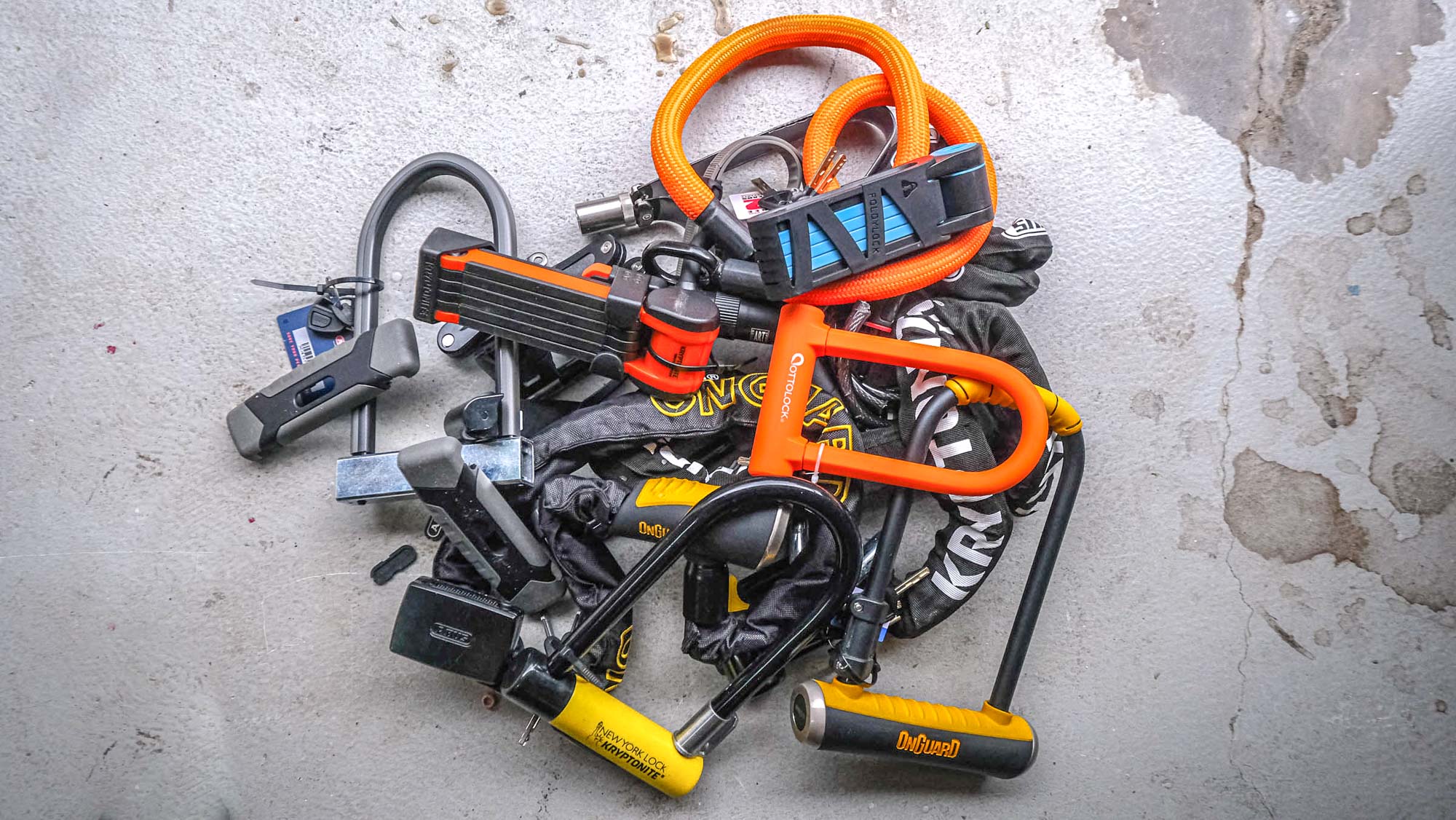
A strong, well-designed bike lock will help protect your two-wheeled purchase from opportunistic thieves. To help you choose the best bike lock for you, we put many of the most popular models to the test, from U-locks to chain locks, folding locks to cables.
It's worth keeping in mind that every single bike lock on the market today can be cut or otherwise destroyed by a determined thief. However, the best bike locks, namely, those listed here, will deter opportunistic, grab-and-go crooks and thwart all but the most prepared criminals.
When testing the best bike locks, we looked at usability, portability, weight and of course, the level of protection provided. Of the numerous models we used and abused with angle grinders, hammers and bolt cutters, these are the best ones you can buy in 2025 to guard your bike, electric bike or electric scooter.
We've divided this guide into sections based on the various types of bike locks available to help you decide which is best for your bike and needs. On the subject of protecting valuables, be sure to keep your head safe, too, with one of our best bike helmets.

Dan Cavallari is an expert on all things cycling. Based outside of Denver, Colorado, Dan tests electric bikes, bike helmets, lights, locks, GPS computers and other cycling accessories for Tom's Guide with numerous reviews and buying guides to his name.
Best bike locks you can buy today
Why you can trust Tom's Guide
U-Locks
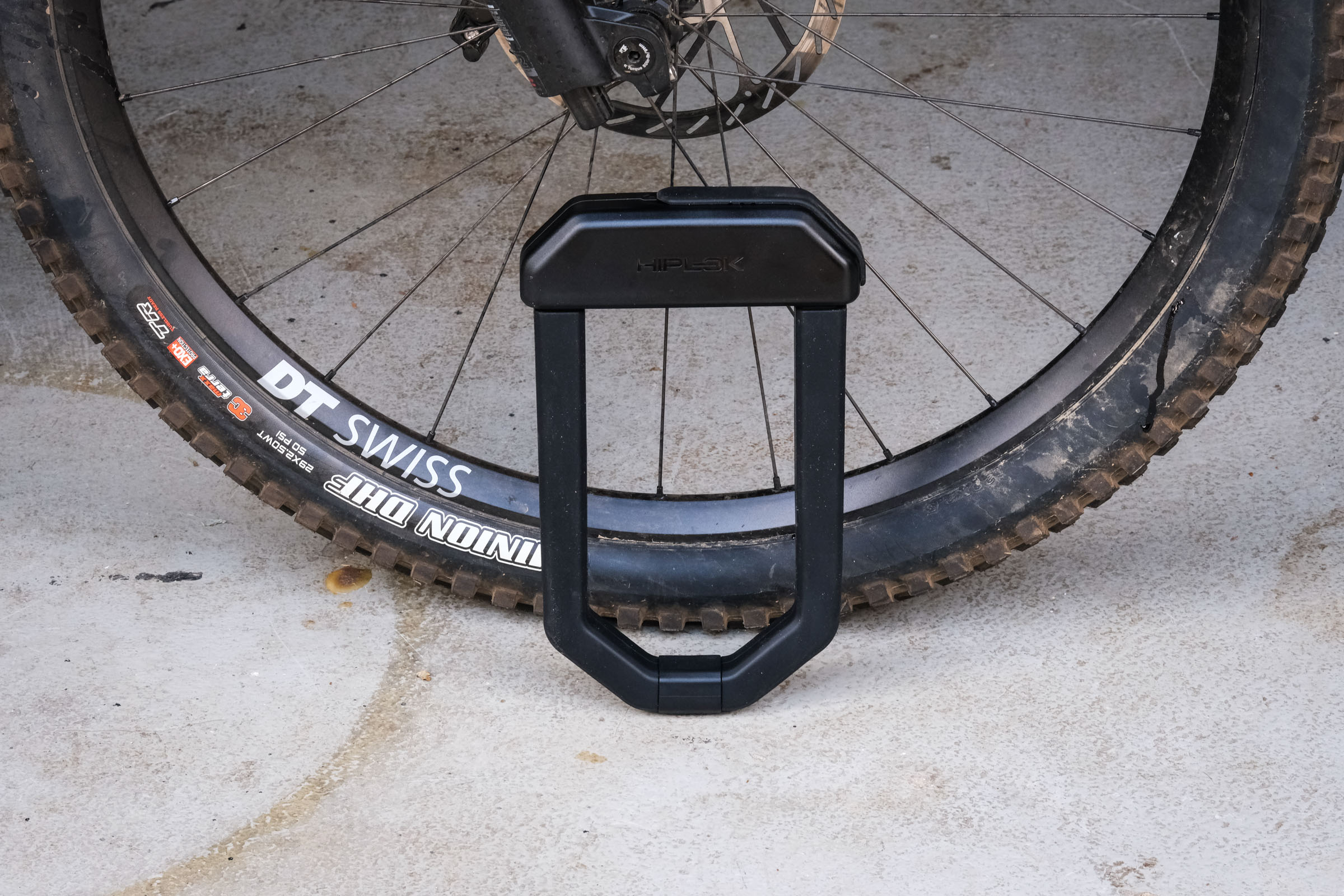
Weight: 5.7 pounds
Shackle length: 8 inches
Pros: Exceptionally resistant to all cutting tools; longer shackle than the D1000, making it more useful in more locking situations.
Cons: Heavy and expensive.
The Hiplok DX1000 is the grown-up version of the exceptionally tough D1000 Anti-Angle Grinder Lock. The big difference between the two is increased locking dimensions.
The DX1000 shackle gives you 8 x 4.4 inches of internal locking space, while the D1000 features 6.1 x 3.6 inches of internal locking space. The DX1000 also weighs 1.72 pounds more, which makes it a bit of a bear to tote around.
Still, the longer shackle combined with the best-in-class cutting resistance makes the DX1000 a formidable force to be reckoned with. It’s graphene-reinforced, which means angle grinders take twenty times as long to cut through it as compared to standard D-locks without reinforcement.
The anti-rotation design protects the shackle against bolt cutters. It can be used with bicycles, ebikes, and even motorcycles. When combined with the A1000 or AX1000 anchors, the DX1000 provides epic security even in high-theft situations.
It has earned the Sold Secure Diamond qualification, as well as the ART 4-star designation, ranking it among the most secure locks. Hiplok provides a lifetime warranty too. It is perhaps the toughest D-lock you can buy right now.
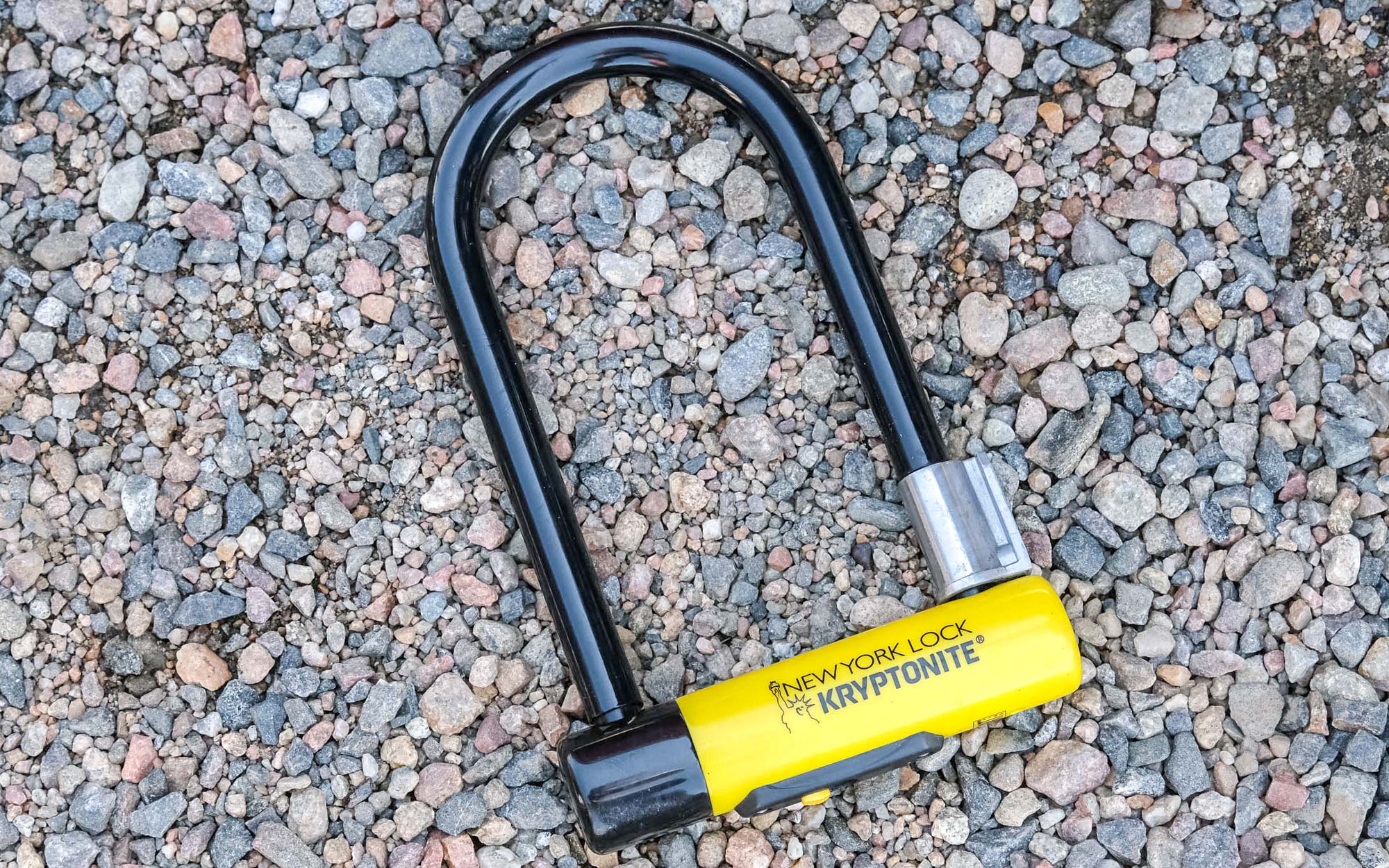
Weight: 4 pounds
Shackle length: 8 inches
Pros: Easy to use; LED key light; high security rating
Cons: Flimsy mount; heavy
With a long, 8-inch by 4-inch shackle opening, it was generally easy to find places to lock up my bike with the New York Lock Standard. It’s rubber-coated throughout, which protects your bike’s finish and the lock itself from exposure to the elements. The New York Lock gets an ART rating of 4 out of 5 stars, which is impressive. It features a Sold Secure Gold rating too.
The keyhole has a cover to keep muck out of the mechanism, and Kryptonite offers a key replacement program should you lose yours. The included key features an LED light to make locking and unlocking easier in the dark. You can register your bike with Kryptonite to take advantage of the brand’s Anti-Theft offer of $4,000 should your bike get stolen. As U-Locks go, the New York Lock is simple, easy to use, and tough. A set of bolt cutters won’t get thieves very far here.
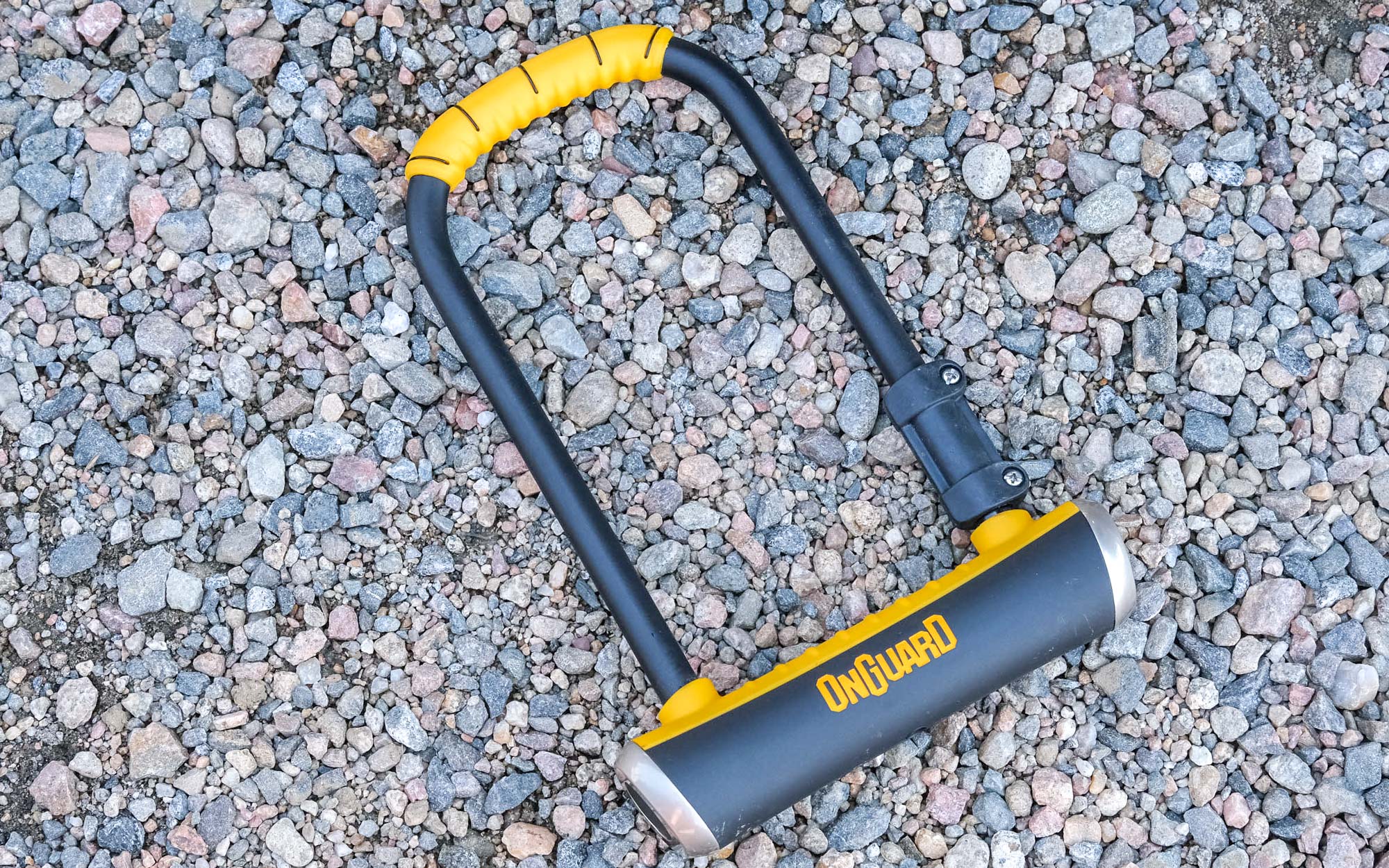
Weight: 3.17 pounds
Shackle length: 9 inches
Pros: Long shackle; well-priced
Cons: Plastic on locking bar seems weak
The Pitbull features a long 9-inch, 14mm thick hardened steel shackle that makes it easy to wrap around your bike frame and a fixed object. The bolting mechanism locks the shackle at four separate points. The lock features both a rubber coating and molded plastic covers to protect your bike’s finish. The locking bar is constructed with a lot of plastic, which could present a weak point during an attack.
But the lock cylinder is also centered on the bar, which eliminates potential prying points. I made a few futile efforts at cutting the shackle with bolt cutters, but the lock withstood the attack with barely a scuff. The 14mm-thick steel shackle can certainly be cut with an angle grinder and enough time, though.
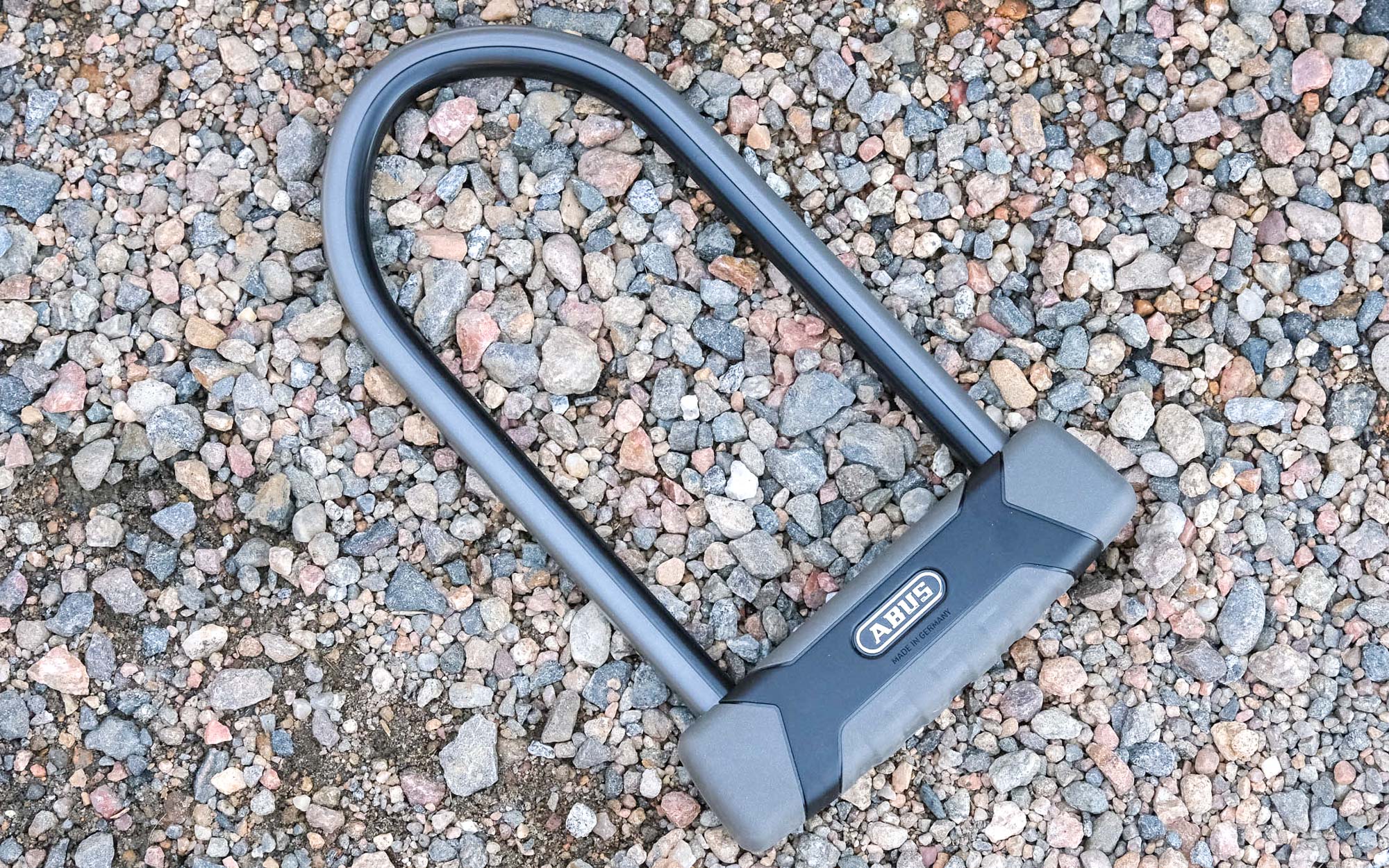
Weight: 3.2 pounds
Shackle length: 9 inches
Pros: Long shackle
Cons: Expensive
The Granite X Plus U-Lock features a super-long 9-inch shackle (4.5 inches wide), which opens up more locking possibilities. The shackle features a squared profile, which makes it more difficult to cut with bolt cutters. And the shackle is locked and secured at both ends to make it more difficult to pick the lock.
Abus was one of the few brands in the test to note this lock had been ice-spray tested. It gets an ART rating of 3 out of 5 stars, but it’s marked as Abus’s maximum security level. It also has a Sold Secure rating. The shackle and bar are both coated to protect your bike’s finish. It’s a great lock if you want as much shackle length as possible, but you’ll pay for the privilege.
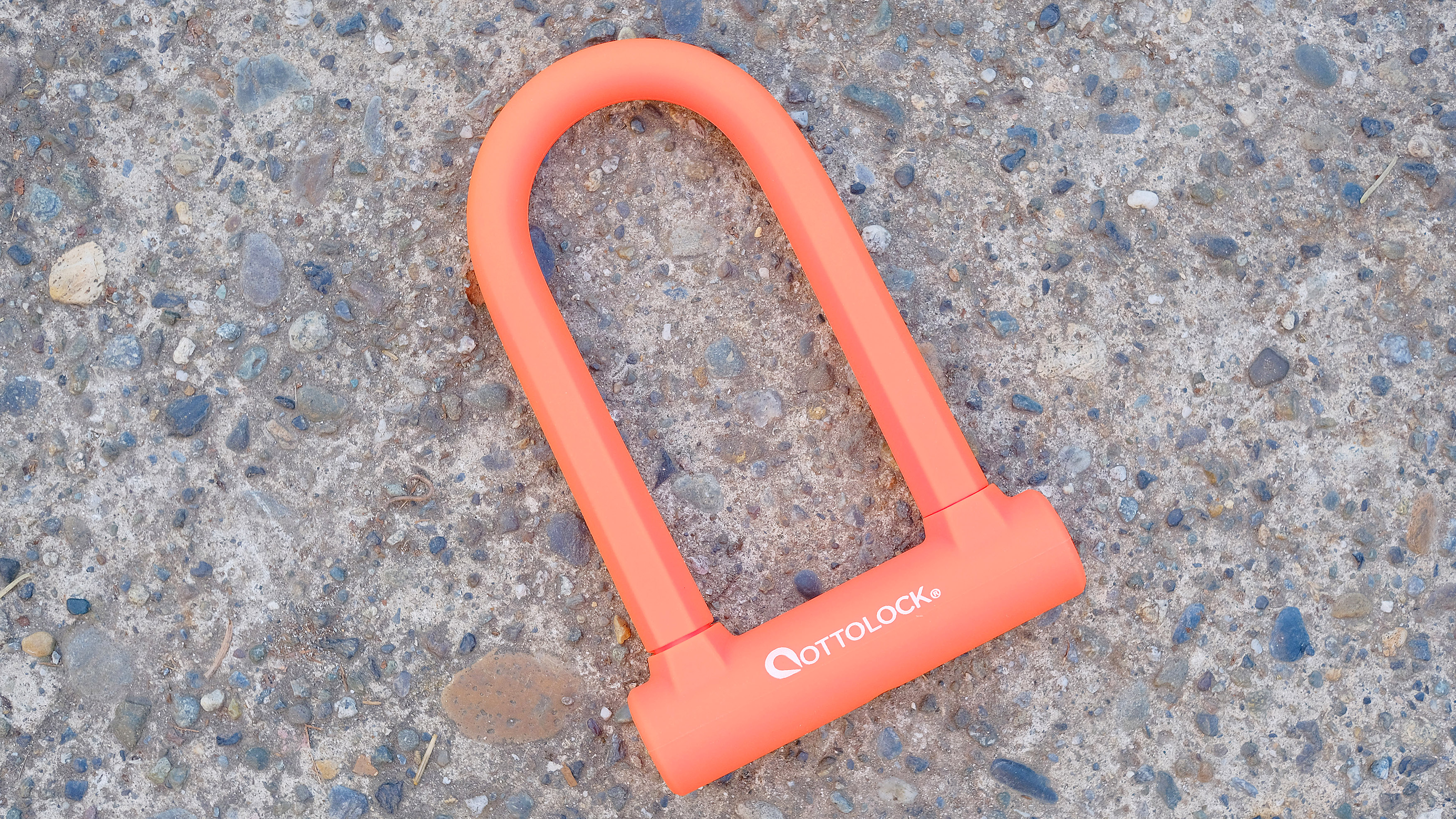
Weight: 1.65 pounds
Shackle length: 5.75 inches
Pros: Compact, lightweight, and silicone coated so it won't scratch your frame; comes with three keys
Cons: Comparably shorter and narrower shackles won't accommodate all locking scenarios/thicker frames
In addition to making one of our favorite cable locks, Oregon-based Ottolock produces one of the best small and lightweight U-locks we've tested. Priced at just $39, the Ottolock Sidekick Compact U-lock is also one of the most affordable. What sets it apart from other petite options is a soft silicone coating that looks sharp and protects your bike from scratches and scuffs.
Beneath the silicone, you'll find 12mm thick hardened steel. The lock also boasts a dual-shackle and anti-rotation deadbolt to deter thieves. That said, it won't provide nearly the same level of protection as heftier and higher-end options, like the Kryptonite New York Lock. And with an opening just 5.75 inches long and 2.75 inches wide, it's not the best choice for folks with thick bike frames.

Weight: 5.1 pounds
Shackle length: 8.75 inches
Pros: Angle grinder-resistant construction
Cons: Pricey; heavy
For ebike owners seeking the absolute best protection for their investment, look no further than the Abus Granit Super Extreme 2500. Similar to the Hiplok DX1000, this beefy U-lock is coated in a material that dulls the blade of angle grinders before they can cut through the shackle or crossbar. In this case, Wolfram carbide is used.
The Super Extreme 2500 is a little cheaper than the Hiplok D1000 but for around $20 less, you get a longer shackle which should better accommodate chunky ebike frames. For further protection, the Abus features dual locking cylinders made of hardened steel. The lock also comes with an extra set of keys and a code for replacement, should you lose both sets. However, like Hiplok, there's no anti-theft reimbursement policy.
Chain locks
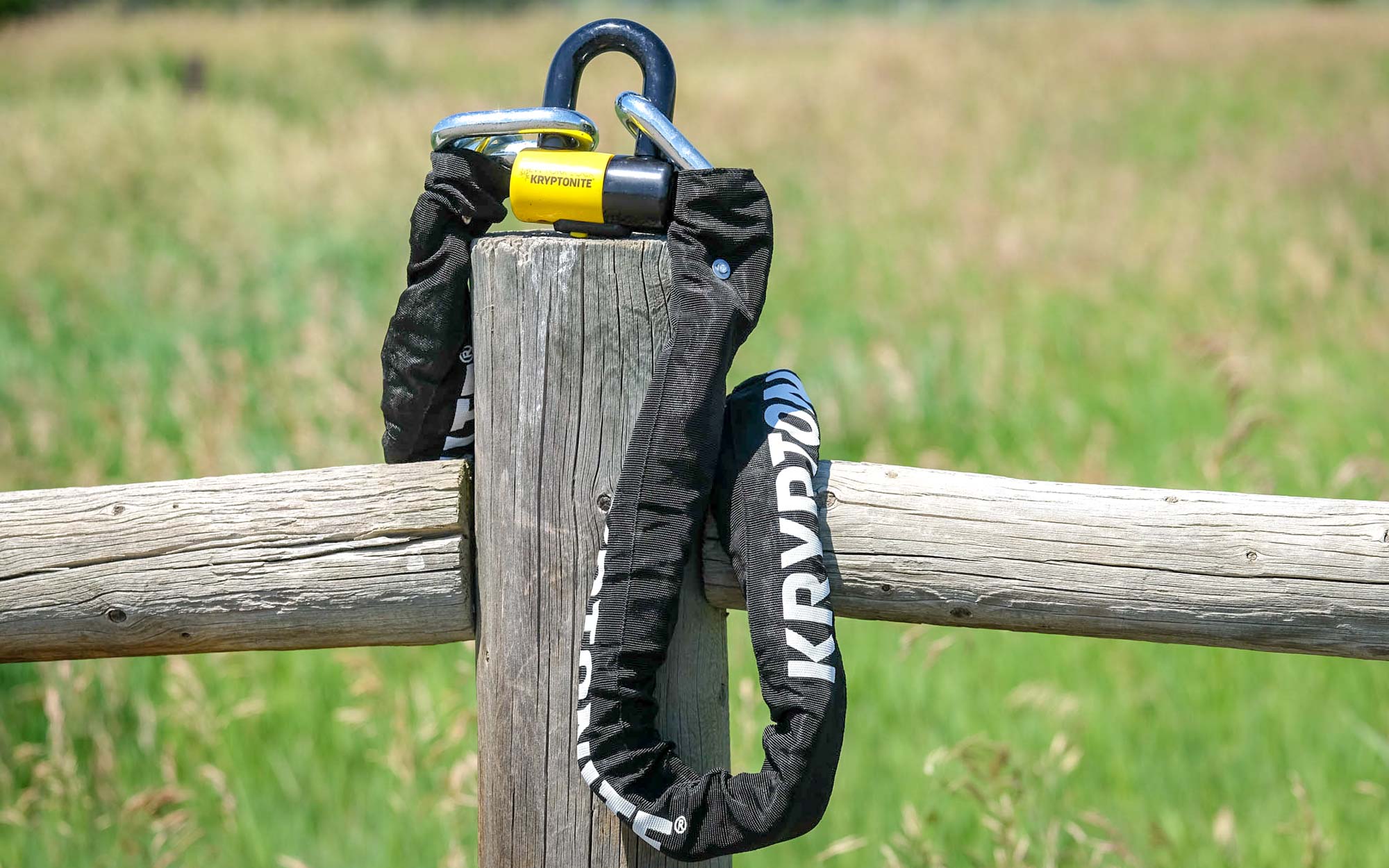
Length: 25 inches
Weight: 14.8 pounds
Pros: Big, burly, intimidating, and secure
Cons: Very, very heavy
The legend. The beast. This lock has long been used by New York City messengers who lock their bikes up in heavily trafficked areas, sometimes for long periods of time. It’s super heavy and not particularly comfortable to wear over your shoulder. But if you’re looking for the pinnacle in protection, the Legend may be your best bet. It combines heavy duty construction with the flexibility to lock your bike in various locking situations.
I did make a token effort at cutting a link with my bolt cutters, but it was clear from the get-go these links weren’t breaking for anything less than an angle grinder and some determination. The Legend is also one of the very few bike locks to earn a 5-star ART rating. It’s called the Legend for a reason.
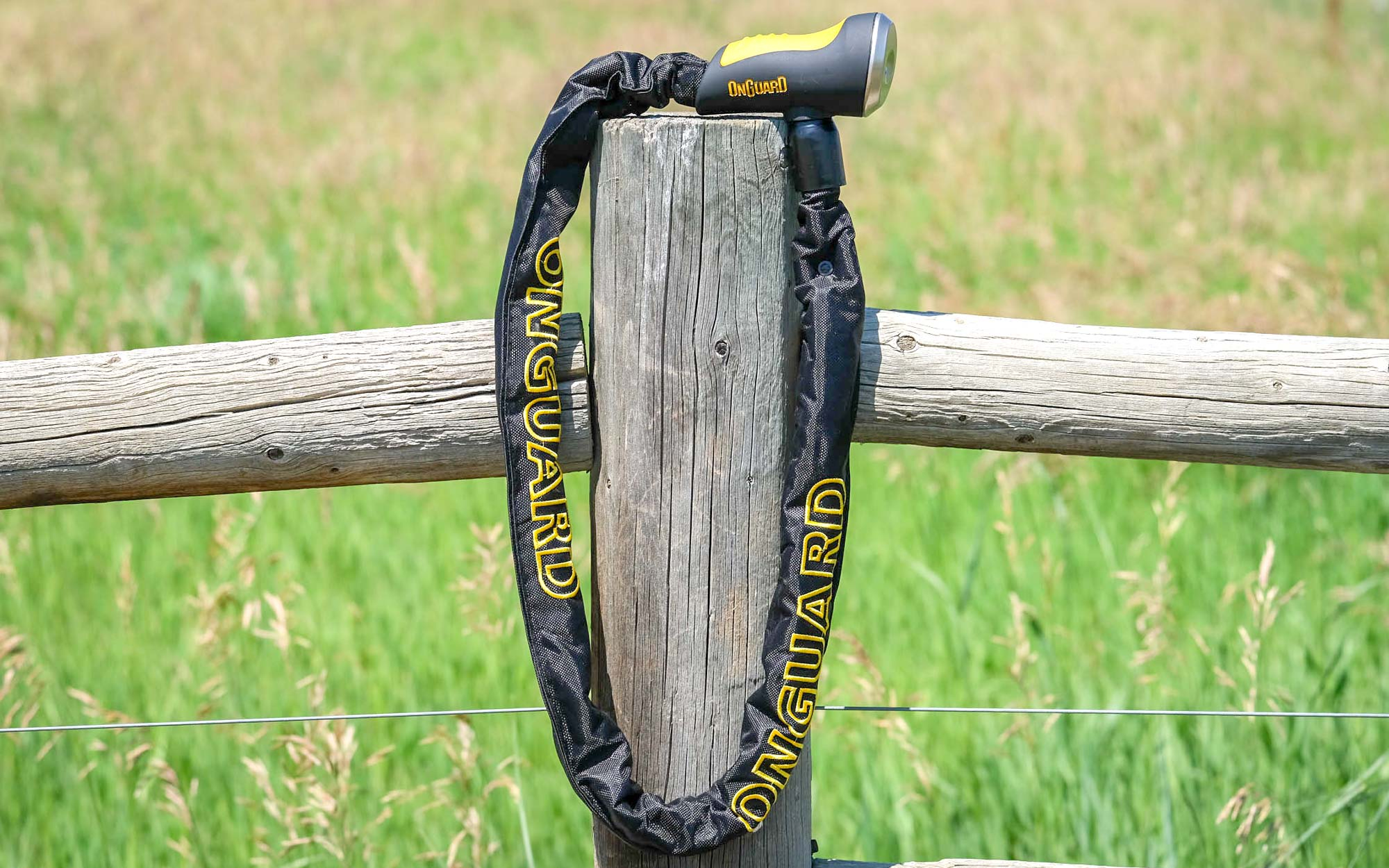
Length: 3.5 feet
Weight: 6.86 pounds
Pros: Locking mechanism is integrated into the chain; good price
Cons: Quite heavy
The OnGuard’s titanium-enforced hexagonal hardened steel chain links aren’t as big and thick as Kryptonite’s Legend chain lock, but the Mastiff weighs almost eight pounds less. It was impervious to my attacks with a 24-inch bolt cutter, but it could be cut with an angle grinder in 30 seconds or so.
Unlike the Kryptonite Legend, which uses a separate U-lock to secure the ends of the chain, OnGuard integrates the locking mechanism into the lock itself. That’s one less thing to keep track of — or lose. OnGuard does offer up to $2,001 in anti-theft protection, though you’ll need to register your bike with the company. The Mastiff comes with 5 keys, and the locking mechanism bolts secure in two locations for resistance to pulling and twisting.
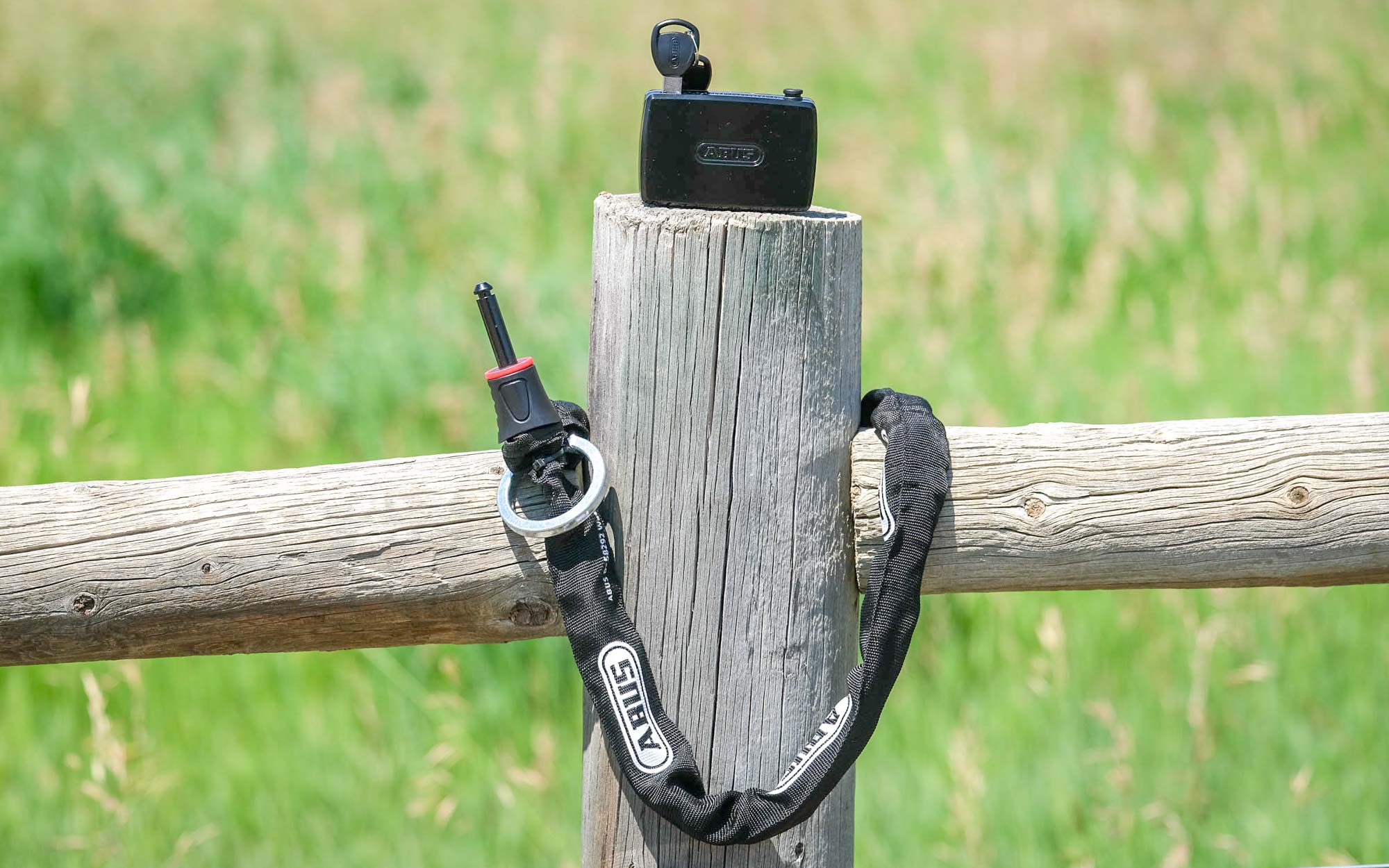
Length: 3 feet
Weight: 3 pounds
Pros: Alarm is a neat feature to deter casual thieves
Cons: Looks and feels clunky when mounted to a bike
While the Adaptor Chain included with the Alarm Box 2.0 can be cut with a pair of bolt cutters and some elbow grease, thieves may be additionally deterred by the Alarm Box’s primary feature: a 100 decibel alarm that sounds with excess movement or tampering.
If the bike just gets slightly jostled, a five-second ‘warning’ alarm will sound. If the movement continues, then the 100-decibel alarm kicks in. The chain measures just over 3 feet, making it easy to lock to a variety of solid racks or bars. It’s also possible to affix the Alarm Box to your bike without the use of the chain.
Folding locks
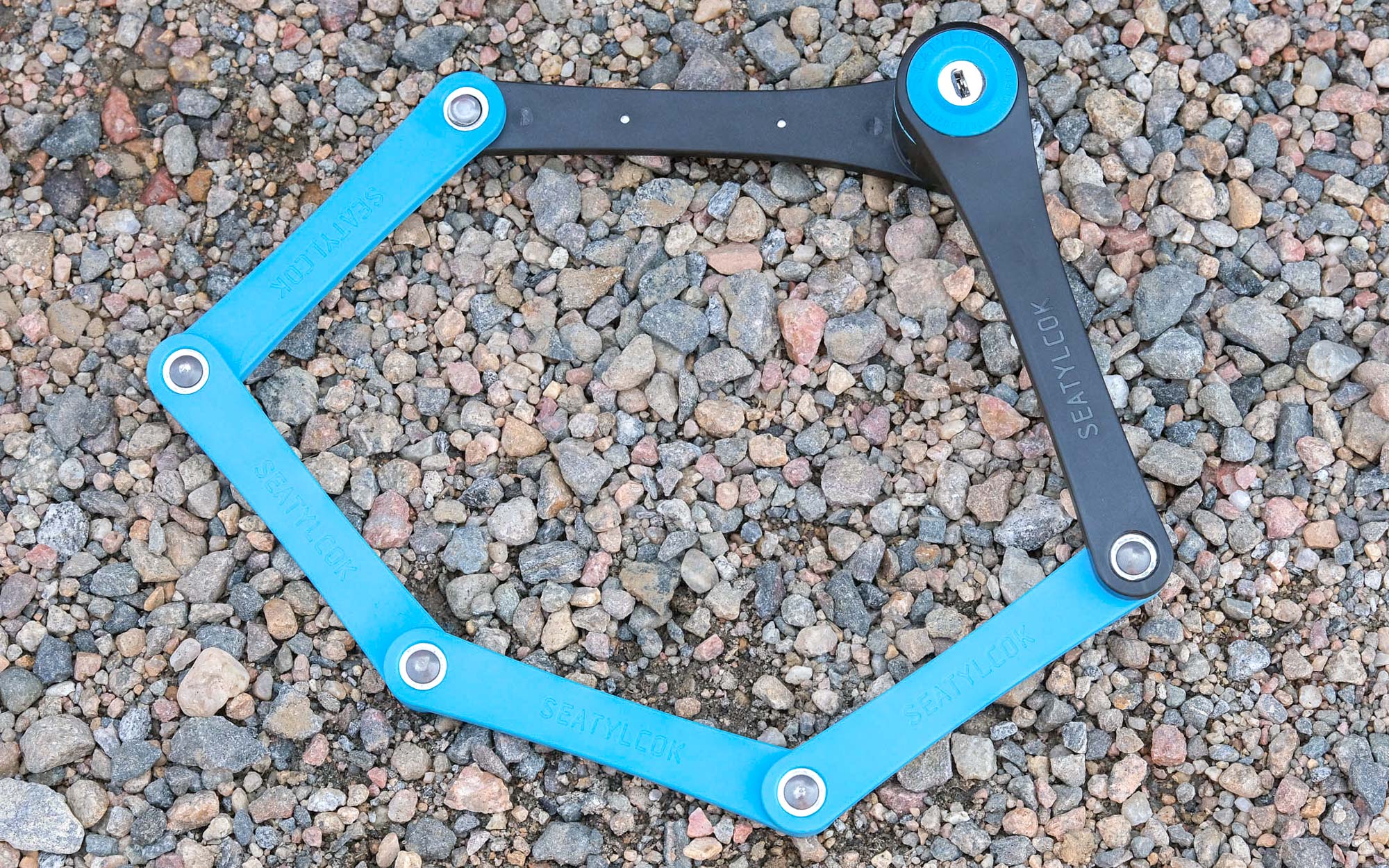
Circumference: 33.5 inches
Weight: 2.2 pounds
Pros: Smooth and easy operation
Cons: Circumference when open could be slightly larger
Buttery smooth articulation and a compact design that slides easily into the included mount make the Seatylock Foldylock compact the best folding lock we tested. The 33.5-inch circumference of the lock when fully open is slightly smaller than the Kryptonite Evolution 790, but large enough to open up plenty of locking possibilities.
The rivets connecting the bars are designed to resist sawing and cutting attacks. The rounded heads of the rivets make it difficult to drill through as well. A thief would need an angle grinder to get through the Foldylock’s stout bars. The lock comes with a 3-year warranty, too. The Foldylock Compact meets the right combination of weight, compact design at 7.5 inches long when folded, and locking capabilities to make it best in the folding lock category.
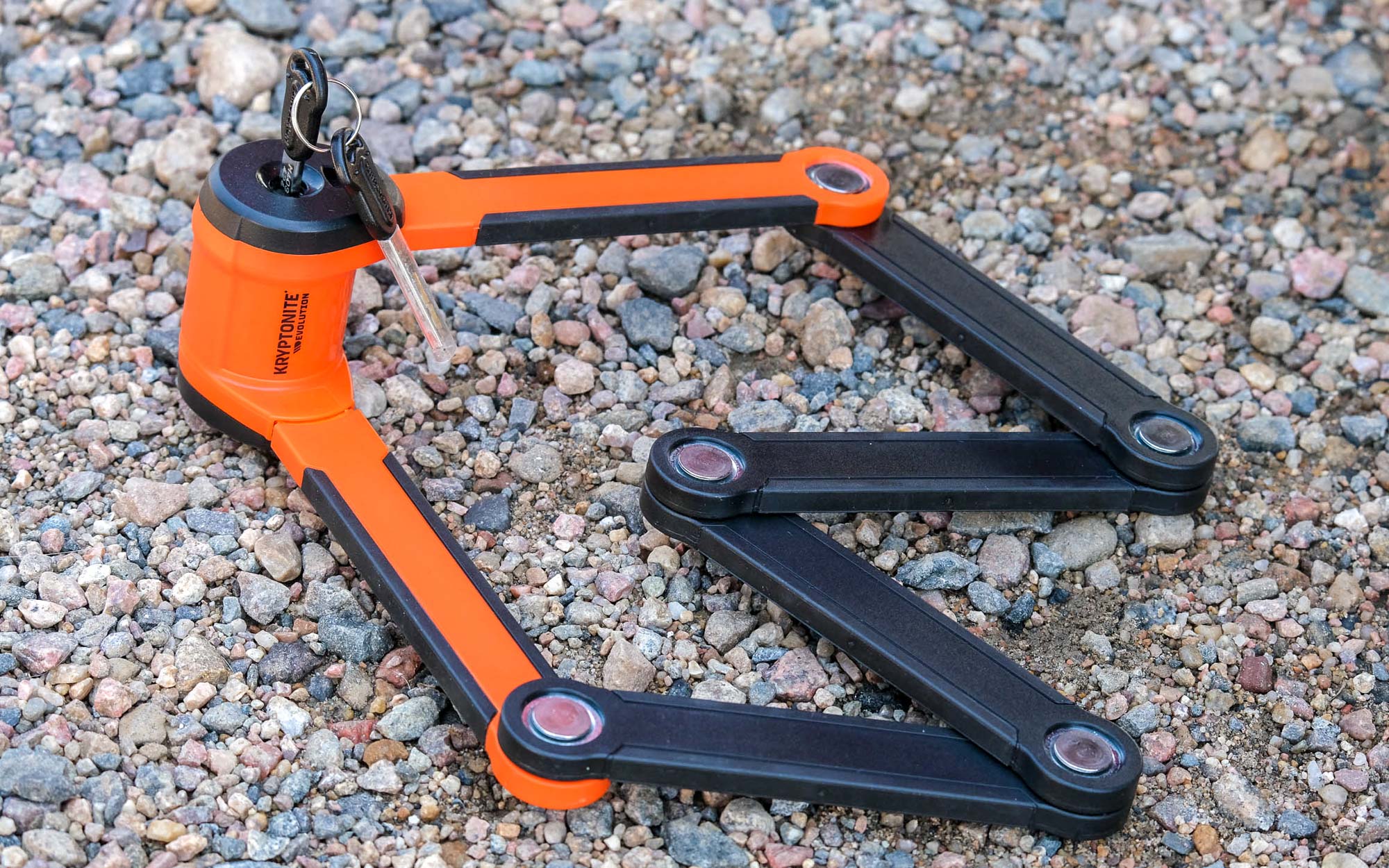
Circumference: 35 inches
Weight: 3.15 pounds
Pros: Big circumference; cool frame mount
Cons: Hinges are a bit stiff
Like all folding locks, the Evolution 790 only moves two-dimensionally, making locking in certain situations trickier. But it has the biggest circumference of the three we tested, so you’ll have plenty of wiggle room to secure your bike. While not a major issue, the hinges don’t move as smoothly as other options in this category.
The lock includes a pretty neat mount that holds the lock tightly until you press a release button. But I wonder if more moving parts makes it more susceptible to failure over time. The slim profile when folded makes it a good option for stowing in a backpack. I chopped at this lock with my 24-inch bolt cutters, made a few scratches, then gave up.
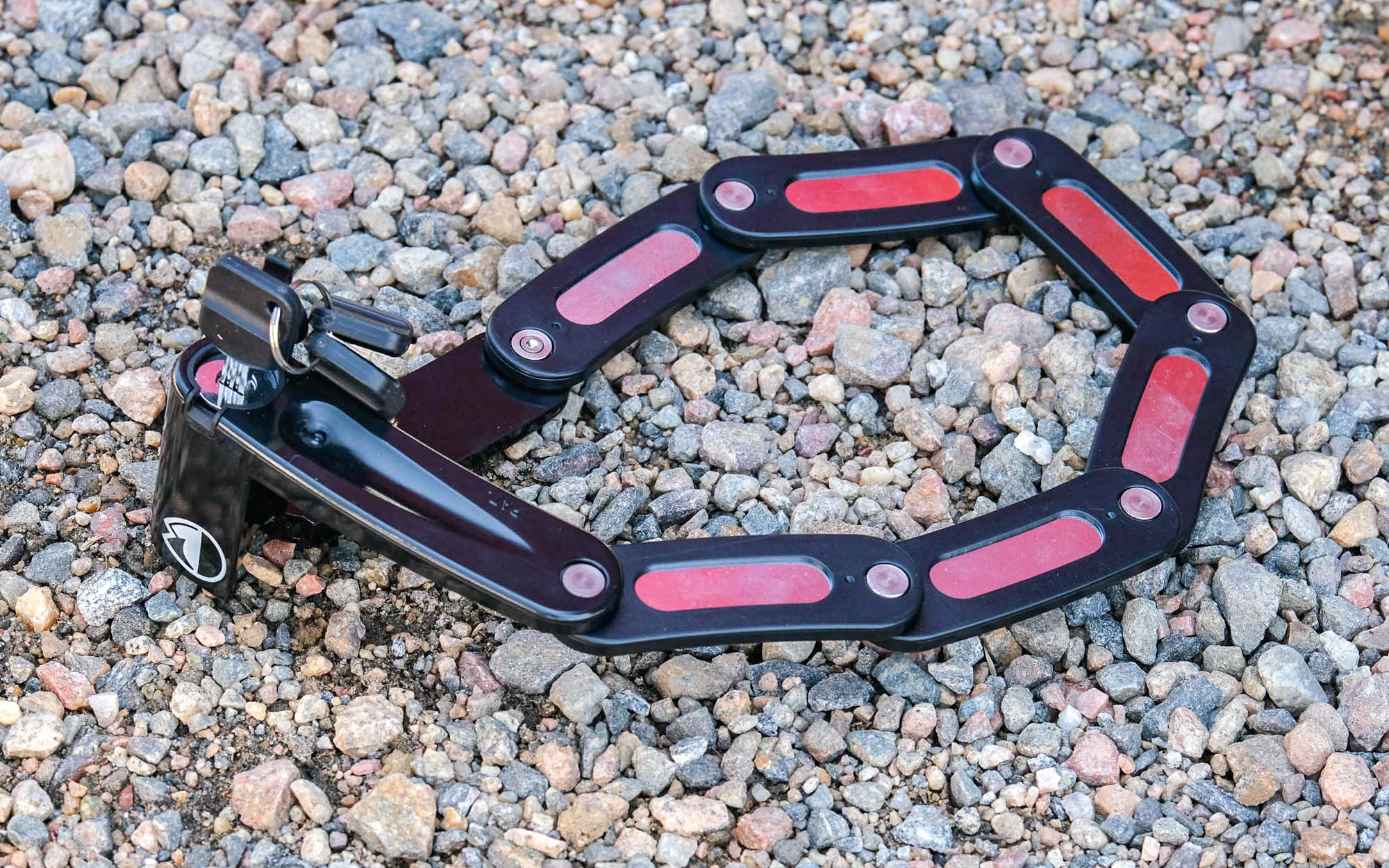
Circumference: 27 inches
Weight: 1.5 pounds
Pros: Folds down small and stores easily; affordable; fairly light
Cons: Small circumference
The Hendrix is compact and easy to use. A plastic mount is included so you can secure the Hendrix to your bike. The lock would just as easily stow in a backpack, or in a jersey pocket — though it’s a touch heavy, so it will likely pull on your jersey enough to become uncomfortable.
The overall circumference when the lock is completely unfolded is a bit small, which limits where you can use the lock. And like all folding locks, the Hendrix only articulates in a linear fashion. It’s a handy and portable lock that’s easy to toss in a backpack. I was almost able to cut through the lock with my 24-inch bolt cutters, but despite repeated cuts and lots of twisting, the lock withstood the attack — just barely.
Cable locks
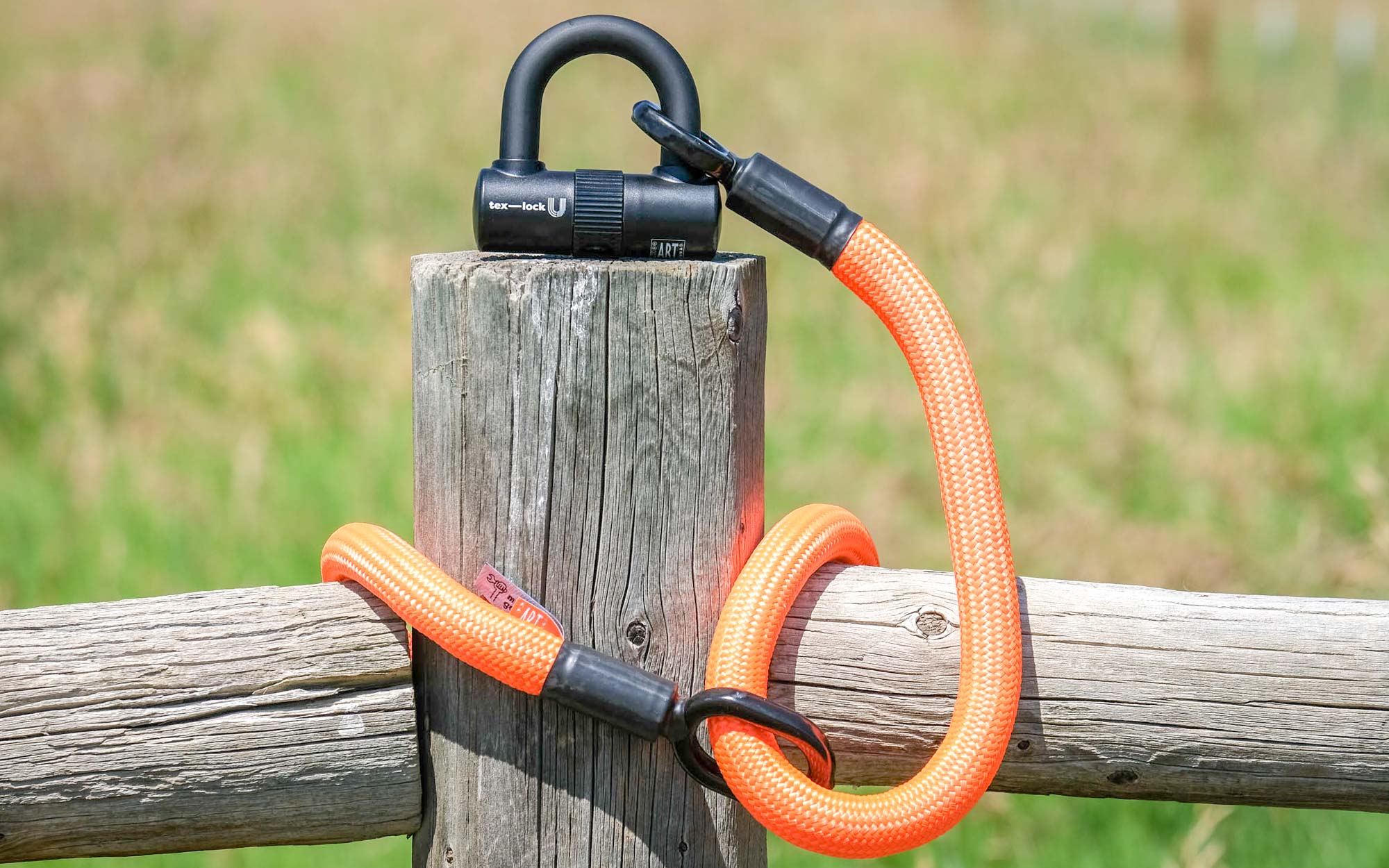
Type: Synthetic rope with steel core
Length: 47 inches
Weight: 3.1 pounds
Pros: Super flexible
Cons: Gets dirty easily
The Eyelet from Tex Lock feels an awful lot like a synthetic rope. That’s because it basically is — with a steel core surprise. The combination of the three rope layers and the steel core make this light and flexible lock tough to cut quickly. Add in the U-lock and you’ve got a lock that will delay any would-be thief for a good long while, even with the right tools. The Eyelet is light and comfortable to wear over your shoulder.
It looks cool, too, though it picks up dirt rather quickly. And more importantly, it’s easy to loop it through your bike and stationary poles or the like. There are lots of locking and storing possibilities here, and with three lengths to choose from; I tested the 120cm (47 inch) version and found it to be the perfect length in most locking situations, there’s a Tex Lock for everyone.
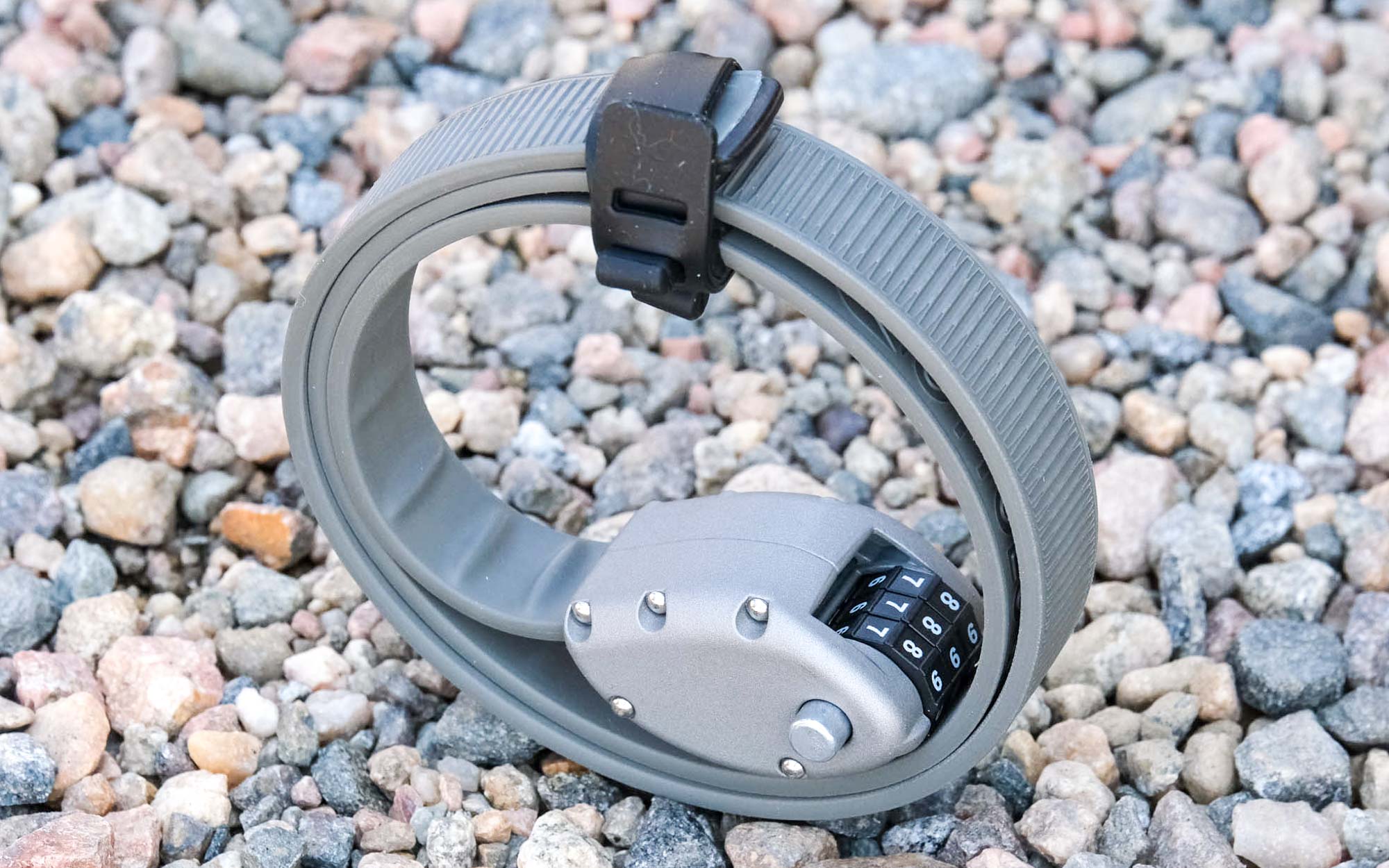
Type: Flat strap with combination
Length: 18-60 inches
Weight: 14 ounces
Pros: Super compact, easy to stow in a jersey pocket; quite light
Cons: Can be cut with 24-inch bolt cutters quickly
This super-compact lock is easy to use and best for stowing in a jersey pocket for quick in and out trips at the coffee shop, but it’s not ideal for long-term storage security. I cut this lock very easily with a set of 24-inch bolt cutters, but the six stainless steel bands encased in Kevlar will slow down any would-be thieves with smaller cutters.
And I could not get through the band with sheet metal cutters or a small pair of diagonal cutting pliers — the types of tools thieves can stuff in their pockets. If you want a bit of added security, pair this lock with Ottolock’s Sidekick U-Lock (sold separately). The three number tumblers can sometimes be hard to position correctly because they’re so small, but otherwise, the Hexband is super simple to use. The lock is available in three sizes (18, 30, and 60 inches) and multiple colors.
How to choose the best bike lock for you
Think carefully about your needs in order to choose the best bike lock for you. For starters, think about how much security you’ll actually need. If, for example, you’ll be leaving your bicycle locked outside your apartment or office building for hours or even days at a time, you’ll want a heavier-duty lock. But if you’re only popping into the coffee shop for a few minutes, a lighter, more portable lock might do the trick.
Portability is an important consideration as well. A lock you don’t want to carry with you is a lock you’re likely to leave at home. Some locks are small enough to fit in a jersey pocket, while others will need a dedicated mounting space on your bike or some real estate in a backpack.
While not always the case, locks that focus on portability will sacrifice some burliness by necessity. So smaller, thinner locks may be more susceptible to common tools that thieves use. Still, even a small and portable lock will offer some theft deterrence for quick lockups outside the coffee shop or grocery store. Try to decide whether you’ll need more portability or more theft deterrence. You can always buy two different types of locks to fit different needs, too.
The lock’s weight matters too, and while that’s closely related to portability, it is entirely possible to find a strong, durable lock that doesn’t weigh a ton and packs down relatively small. Weight becomes more of a concern if you’re stowing the lock in a pocket or backpack. It can be less impactful if you’re mounting the lock on your bike.
That said, the heaviest-duty locks are also, well, quite heavy. Such locks are best for locking your bike long-term in high-theft areas. But they won’t feel too great in a backpack or slung over your shoulder.
The theft deterrence level depends largely on the materials used to create the lock and the overall design. Keeping in mind that any lock can be cut or destroyed with the right tools, you can hedge your bets by choosing a lock with heavy-duty materials like steel chain links or a U-Lock with a steel shackle. Cable locks can be cut quickly and easily with bolt cutters, but burlier locks will require heavier-duty tools like an angle grinder. The odds of a thief walking down the street with an angle grinder are much lower than a thief equipped with bolt cutters, so heavier-duty locks can act as a deterrent without ever having to face an actual attack.
Finally, prices for bike locks can vary widely, from $20 all the way up to $300 or more. Choose a lock within your budget, and keep in mind that just because a lock is expensive doesn’t mean it’s better for your needs. Consider all of the above criteria before plunking down your credit card.
Bike lock types
Chain locks vs. U-Locks vs. folding locks
Chain locks differ from U-Locks and folding locks in construction and capability. Chain locks are built with chain links and are connected at the ends with either a small U-lock or an integrated locking unit.
U-Locks feature a U-shaped metal shackle that inserts into a locking mechanism. And a folding lock features metal links that pivot to open up in a wide circle, then fold up for easy storage.
Each type of lock has distinct advantages and disadvantages. Chain locks are very durable, easy to lock around a variety of fixed objects, and depending on the size of the links, they can be worn around the shoulder for easy transport, and they are very resistant to theft attacks. But such locks can be quite heavy, especially as the links get larger.
U-locks are one of the most common types of locks because they are resistant to all sorts of cutting tools. They stow easily in a backpack, too, and can even mount cleanly on your bike. They, too, can get quite heavy when you get into longer shackle U-locks. U-locks are also limited in locking capabilities because the shackles often don’t reach far enough to be useful.
Folding locks solve that problem by extending outward to create more locking opportunities. The articulated arms extend to form a large circle. These locks fold up compact and can be stowed easily in a backpack or mounted on your bike. The pivots that connect the arms can be a weak point, however, making these locks susceptible to drilling or leverage attacks.
How we tested the best bike locks
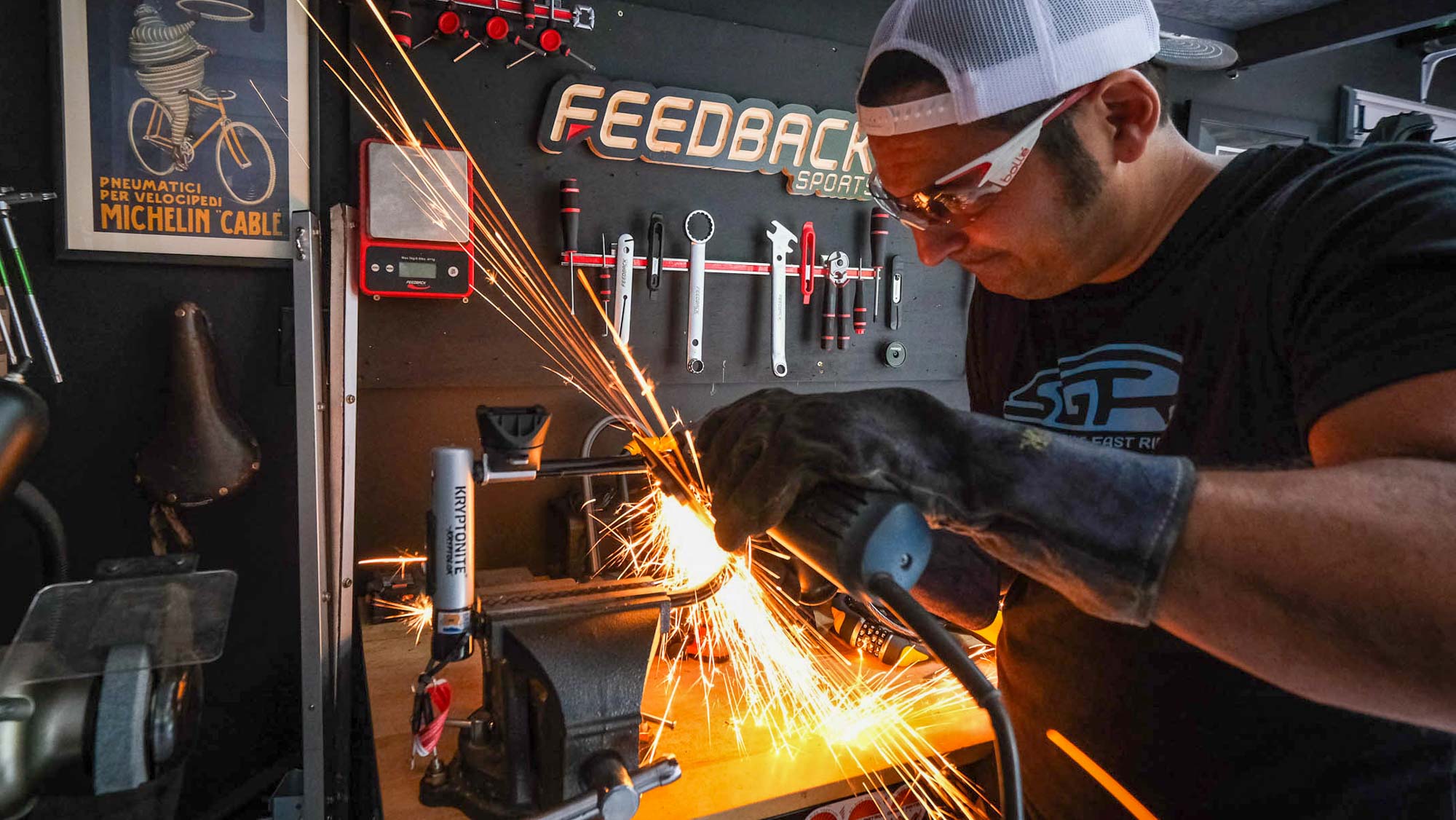
Portability, price, weight, and ease of use are all fairly easy to determine by simply taking the lock with you on various rides around town. So that’s exactly what I did with each lock in the test. From coffee shops to train stations, I locked up my bike for quick trips and all-day storage. Fortunately, no thieves came upon my bike; if they did, they were deterred enough by the locks to move on.
I cut a random sampling of locks using both bolt cutters and an angle grinder to get a sense of the effort that goes into it. Not surprisingly, I was able to destroy each one, though the time and effort it took varied quite a lot. Round cables were the easiest to cut with 24-inch bolt cutters I had on hand; large-diameter chains and U-lock shackles were the most difficult and required the use of an angle grinder.
But as mentioned previously, it’s possible to cut through or otherwise destroy any bike lock on the market with the right tools and enough time and determination. With that in mind, we examined each lock for potential weaknesses or obvious flaws that might make cutting or destroying easier.
Frequently asked questions
Are there testing and design standards for bike locks?
The two most common security ratings you’ll find on bike locks are the Sold Secure designation (Bronze, Silver, Gold, and Diamond), and the ART star rating (5 stars is the highest rating and sparingly bestowed upon locks).
Manufacturers may also include their own in-house security ratings to give buyers a sense of how much theft deterrence they can expect from a specific lock. Such ratings do not necessarily adhere to any independent scale or rating.
Can all bike locks be cut?
Yes. With the right tools and enough time, any bike lock can be cut or otherwise destroyed. It is important to keep in mind that even if a lock can be destroyed, it may take a thief a prohibitively long time to get through the lock with the tools on hand. So locks still serve an important function even if they can be cut.
Should I still use a bike lock even if I know it can be cut?
Yes. The vast majority of thieves are opportunists. If they can’t grab the bike and go, they are less likely to make an attempt to steal it. A tough lock that actually looks tough to destroy may deter a thief from spending the time and effort to steal your bike.
What tools do thieves use to cut locks?
The most common tool bike thieves use is a pair of bolt cutters. These can cut through most cable locks and even some U-locks, but other U-Locks and chain locks will require an angle grinder. Angle grinders are quite loud and throw a lot of sparks, so if your lock can withstand bolt cutter attacks, it’s already well ahead in the safety game. For the toughest locks, thieves may use torches or other heavy-duty tools. Less commonly, thieves may use chemicals that will freeze the lock, making it more susceptible to damage.
Will a lock brand cover the cost of my bike if it gets stolen?
Some brands like Kryptonite and OnGuard do have programs that will reimburse you up to a certain dollar amount if your bike gets stolen. This requires a registration process, and you’ll want to read the fine print regarding what is actually covered. Other brands may have programs that will replace the lock if your bike gets stolen, but not the cost of the bike itself. Both of these options are generally considered ‘add-ons’ and may require additional purchases.
How should I carry my bike lock?
That largely depends on the size and shape of the lock. Some small locks can be stowed in your jersey pocket. Larger locks may require you to carry a backpack or other storage solution. And many locks come with specially designed mounts that you can connect directly to your bike. Ultimately, you should carry your lock however it is most convenient for you.
Do bike locks require maintenance?
Not usually. But if your lock is exposed regularly to the elements, you may notice degradation. Key cylinders and combination locks in particular may become more difficult to operate in these cases, though often you can spray those parts with some lubrication to restore functionality.
Do bike locks wear out?
Yes, but not quickly in most cases. Regular and/or prolonged exposure to sunlight, rain, snow, dirt, and mud will accelerate wear. Any moving parts are more susceptible to wear over time, such as hinges, lock cylinders, combination tumblers, etc. If you notice premature wear or damage to your lock, your best bet is to contact the manufacturer to see if it is covered under warranty.
Features Comparison
| Row 0 - Cell 0 | Hiplok DX1000 | Kryptonite New York Lock Standard | OnGuard Pitbull STD U-Lock | Abus Granit X Plus 540 | Ottolock Sidekick Compact | Abus Granit Super Extreme 2500 | Kryptonite New York Legend Chain 1515 | OnGuard 8020 Mastiff Chain Lock | Abus Alarm Box 2.0+ with Adaptor Chain | Seatylock Foldylock Compact | Kryptonite Evolution 790 Folding Lock | RockyMounts Hendrix | Tex Lock Eyelet | Ottolock HEXBAND Cinch Lock |
| Type | U-lock | U-lock | U-lock | U-lock | U-lock | U-lock | Chain lock | Chain lock | Chain lock | Folding lock | Folding lock | Folding lock | Cable lock | Cable lock |
| Weight | 5.73 pounds | 4 pounds | 3.2 pounds | 3.2 pounds | 1.65 pounds | 5.1 pounds | 14.8 pounds | 6.7 pounds | 3 pounds | 2.2 pounds | 3.2 pounds | 1.5 pounds | 3.1 pounds | 14 ounces |
| Length | 8 inches | 8 inches | 9 inches | 9 inches | 5.75 inches | 8.75 inches | 25 inches | 3.5 feet | 3 feet | 33.5 inches | 35 inches | 27 inches | 47 inches | 18-60 inches |
| Price | $349 | $149 | $50 | $160 | $39 | $329 | $169 | $59 | $109 | $90 | $150 | $69 | $149 | $75 |
More from Tom's Guide
Get instant access to breaking news, the hottest reviews, great deals and helpful tips.

Dan Cavallari is the former technical editor for VeloNews Magazine, who currently reviews electric bikes, bike lights, and other bike accessories for Tom's Guide. In addition to VeloNews, his work has appeared in Triathlete Magazine, Rouleur Magazine, CyclingTips.com, Road Bike Action, Mountain Bike Action, CycleVolta.com, Tomsguide.com, and much more. Dan also hosts two podcasts on his site, Slow Guy on the Fast Ride: One is about cycling and other outdoor activities, while the other looks at mental health issues. Most recently, Dan also covered the 2022 Tour de France. Dan lives outside of Denver, Colorado with his family.
- Dan BracagliaSenior Writer, Fitness & Wearables
